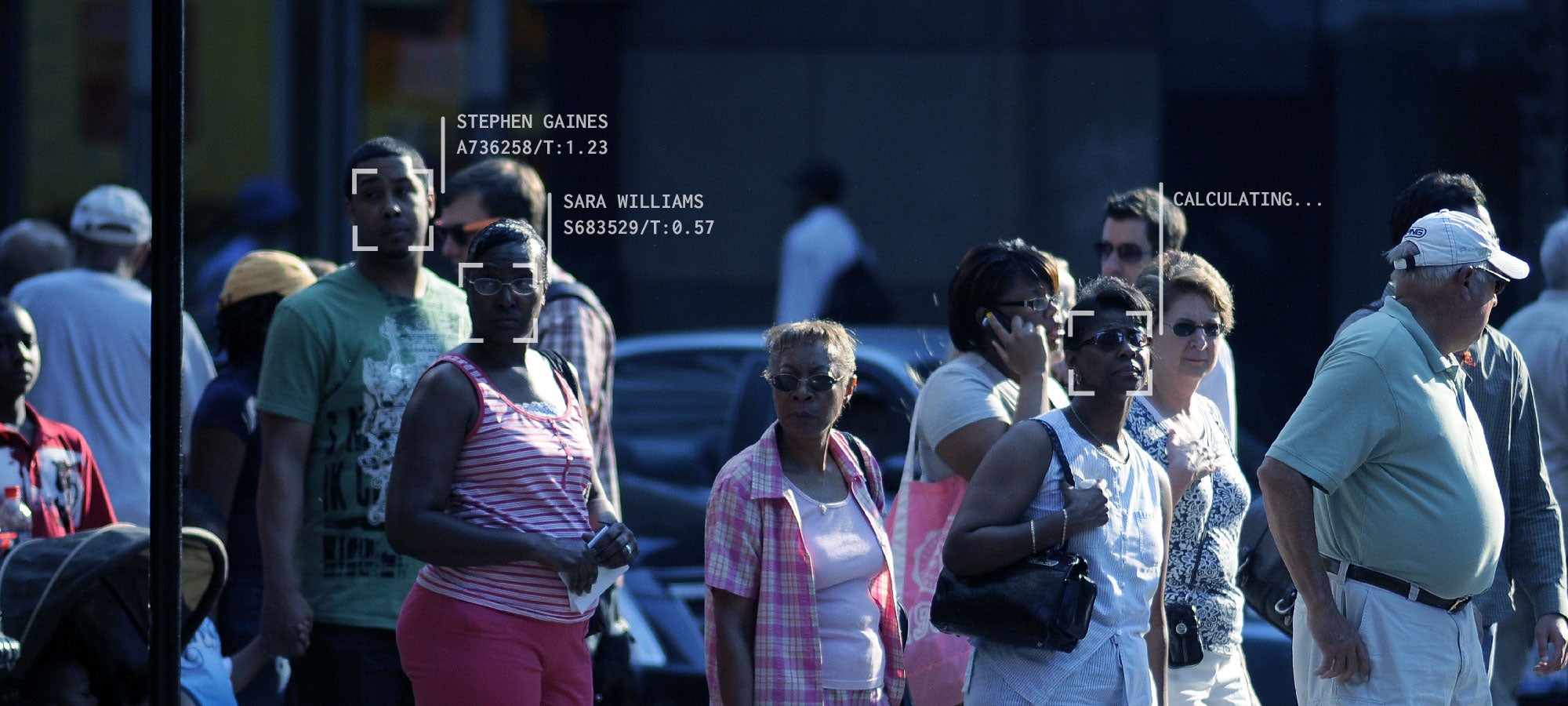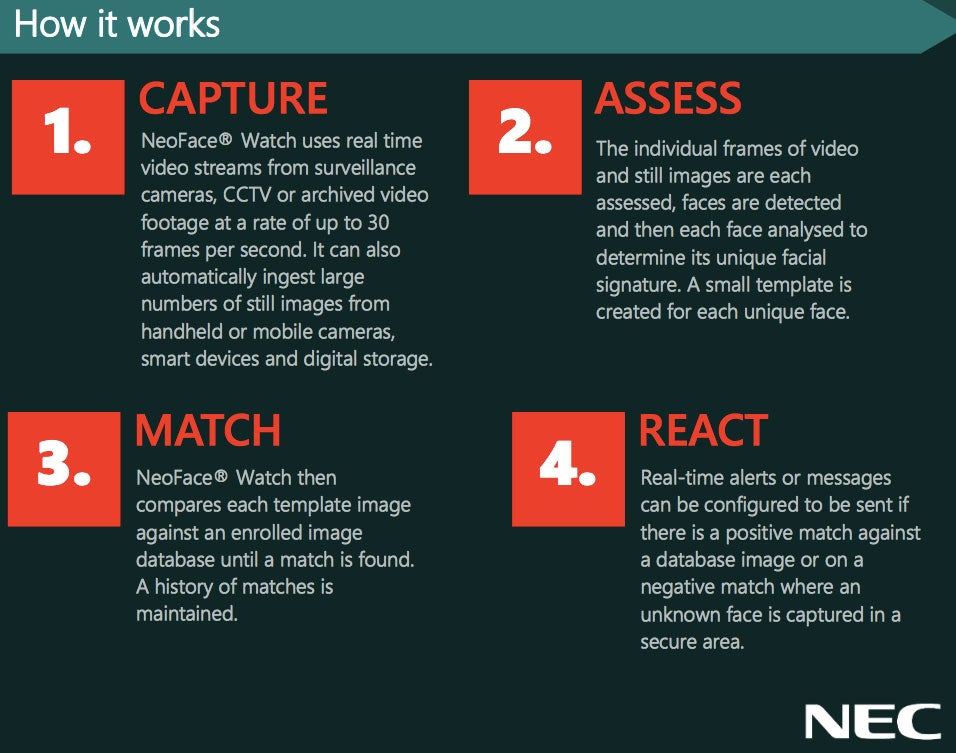Neil Stammer was a fugitive wanted for child abuse and kidnapping who had evaded capture for 14 years after failing to show up for his arraignment. Then, in 2014, a State Department official with the Diplomatic Security Service ran the FBI’s wanted posters through a database designed to detect passport fraud—and got a hit for Kevin Hodges, an American living in Nepal. It was Stammer, who’d been living in Nepal for years under a pseudonym. He was arrested and returned to the United States to face charges.56
The year before Stammer was caught, on the other side of the world, the Los Angeles Police Department announced the installation of 16 new surveillance cameras in “undisclosed locations” across the San Fernando Valley. The cameras were mobile, wireless, and programmed to support face recognition “at distances of up to 600 feet.”57 LA Weekly reported that they fed into the LAPD’s Real-time Analysis and Critical Response Center, which would scan the faces in the feed against “hot lists” of wanted criminals or “documented” gang members.58 It appears that every person who walks by those cameras has her face searched in this way.
What agencies are using face recognition for law enforcement, how often are they using it, and how risky are those deployments?
When proponents of face recognition answer these questions, they often cite cases like Neil Stammer’s: A felon, long-wanted for serious crimes, is finally brought to justice through the last-resort use of face recognition by a sophisticated federal law enforcement agency.59 The LAPD’s system suggests a more sobering reality: Police and the FBI use face recognition for routine, day-to-day law enforcement. And state and local police, not the FBI, are leading the way towards the most advanced—and highest risk—deployments.
- 56. Federal Bureau of Investigation, U.S. Department of Justice, Long-Time Fugitive Captured: Juggler Was on the Run for 14 Years (Aug. 12, 2014), https://www.fbi.gov/news/stories/2014/august/long-time-fugitive-neil-stammer-captured/.
- 57. West Valley Community Police Station, Surveillance Cameras in West San Fernando Valley, West Valley Police (Jan. 1, 2013), http://www.westvalleypolice.org/index_news_20130120.html.
- 58. Darwin Bond-Graham and Ali Winston, Forget the NSA, the LAPD Spies on Millions of Innocent Folks, LA Weekly (Feb. 27, 2014), http://www.laweekly.com/news/forget-the-nsa-the-lapd-spies-on-millions-of-innocent-folks-4473467.
- 59. See, e.g., Long-Time Massachusetts Fugitive Arrested in North Carolina, Federal Bureau of Investigation, U.S. Department of Justice (June 16, 2016), https://www.fbi.gov/boston/press-releases/2016/long-time-massachusetts-fugitive-arrested-in-north-carolina (While this press release does not mention face recognition, a spokesperson for the Pinellas County Sheriff’s Office stated that the suspect’s identity was confirmed through the use of PCSO’s face recognition program. Pinellas County Sheriff's Office, Email from Jake Ruberto, Technical Support Specialist to Clare Garvie (Jul. 13, 2016) (on file with authors)); Edward B. Colby, James Robert Jones, Military Fugitive on the Run Since 1977, Arrested in South Florida: Authorities, NBC Miami (Mar. 17, 2014), http://www.nbcmiami.com/news/local/James-Robert-Jones-Military-Fugitive-on-the-Run-Since-1977-Arrested-in-South-Florida-Authorities-250247711.html.



